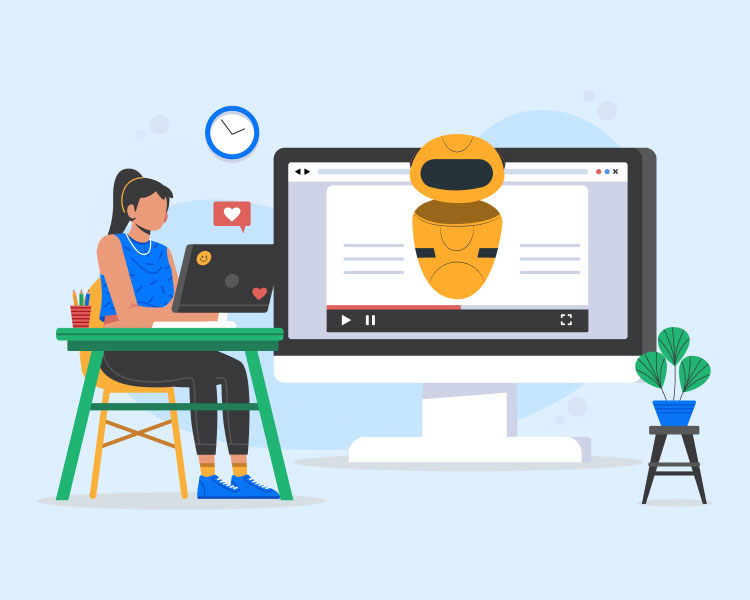This article explores the use of edtech for language learning. It discusses the benefits of using technology in language learning, the different types of ed-tech available, and best practices for effective integration.
Language learning has become an increasingly important topic in the education sector, as the world becomes more connected and globalized. The ability to speak multiple languages is not only beneficial for communication and cultural understanding, but also for career advancement.
The use of ed-tech for language learning has grown significantly in recent years, providing students with new opportunities to learn and practice language skills. This article will explore the benefits of using ed-tech for language learning, the different types of ed-tech available, and best practices for effective integration.
The Benefits of Edtech for Language Learning
Edtech can provide numerous benefits for language learners, including access to a wide range of resources and tools, increased flexibility and personalization, and enhanced motivation and engagement. Edtech can provide students with access to online dictionaries, grammar resources, and interactive exercises, allowing them to practice language skills in a variety of contexts.

Edtech can also provide students with personalized learning experiences, allowing them to work at their own pace and focus on areas where they need the most help. Additionally, the use of ed-tech can increase student motivation and engagement, as students are often more interested in using technology to learn than traditional classroom methods.
Types of Edtech for Language Learning
There are many different types of ed-tech available for language learning, including language learning apps, online language courses, language exchange platforms, and virtual reality language learning. Language learning apps, such as Duolingo and Babbel, provide users with interactive exercises, games, and quizzes to practice language skills.
Online language courses, such as those offered by Rosetta Stone and Coursera, provide students with more structured language learning experiences, including lessons and assessments. Language exchange platforms, such as iTalki and Tandem, connect language learners with native speakers for conversation practice. Virtual reality language learning allows students to practice language skills in immersive environments, such as virtual cities or cultural landmarks.
Best Practices for Effective Integration
To effectively integrate ed-tech into language learning, it is important to follow best practices that have been shown to be successful.
These include identifying the specific needs and goals of language learners, providing access to high-quality and relevant resources, providing opportunities for authentic language practice, and using ed-tech to supplement rather than replace traditional teaching methods.
Additionally, it is important to monitor student progress and adjust teaching strategies as needed to ensure that students are making progress toward their language learning goals.
Examples of Successful Integration
There are many examples of successful integration of edtech in language learning. For example, the use of language learning apps, such as Duolingo, has been shown to be effective in improving language skills in a variety of languages.
Another example is the use of virtual reality language learning, which can provide students with immersive language practice in realistic environments.
Additionally, online language courses, such as those offered by Rosetta Stone and Coursera, have been shown to be effective in improving language skills and providing students with a structured language learning experience.
Challenges of Edtech for Language Learning
Despite the benefits of edtech for language learning, there are also significant challenges. One of the biggest challenges is ensuring that technology is accessible to all students, regardless of socioeconomic status or geographical location. Additionally, there is a concern that the use of edtech can lead to a lack of human interaction and authentic language practice. Furthermore, there is a need for more research to determine the most effective ways to integrate edtech into language learning.
The Future of Edtech for Language Learning
The future of ed-tech for language learning is promising, as the development of new technologies and educational resources continues to accelerate. The COVID-19 pandemic has also accelerated the adoption and development of edtech, as many schools and universities shifted to remote or hybrid learning models. As the world becomes more interconnected, the demand for language learning will only continue to grow, making the integration of ed-tech more important than ever.

One of the most exciting developments in ed-tech for language learning is the use of artificial intelligence (AI). AI can provide personalized feedback to students, allowing them to identify areas where they need to improve and focus their language learning efforts. Additionally, AI can provide more natural and conversational interactions for language practice, improving the authenticity of language learning experiences.
Another trend in ed-tech for language learning is the gamification of language learning. Game-based learning can provide students with engaging and interactive language practice, making language learning more fun and motivating. Gamification can also provide students with a sense of achievement and progress, helping them stay motivated and engaged in their language learning.
Conclusion
Edtech has the potential to revolutionize language learning, providing students with new opportunities to learn and practice language skills. The benefits of ed-tech for language learning are numerous, including access to a wide range of resources and tools, increased flexibility and personalization, and enhanced motivation and engagement.
However, there are also significant challenges to the integration of ed-tech, including ensuring accessibility and authentic language practice. To effectively integrate ed-tech into language learning, it is important to follow best practices and continually monitor student progress and adjust teaching strategies as needed.
The future of ed-tech for language learning is promising, with the development of new technologies and educational resources continuing to accelerate.








